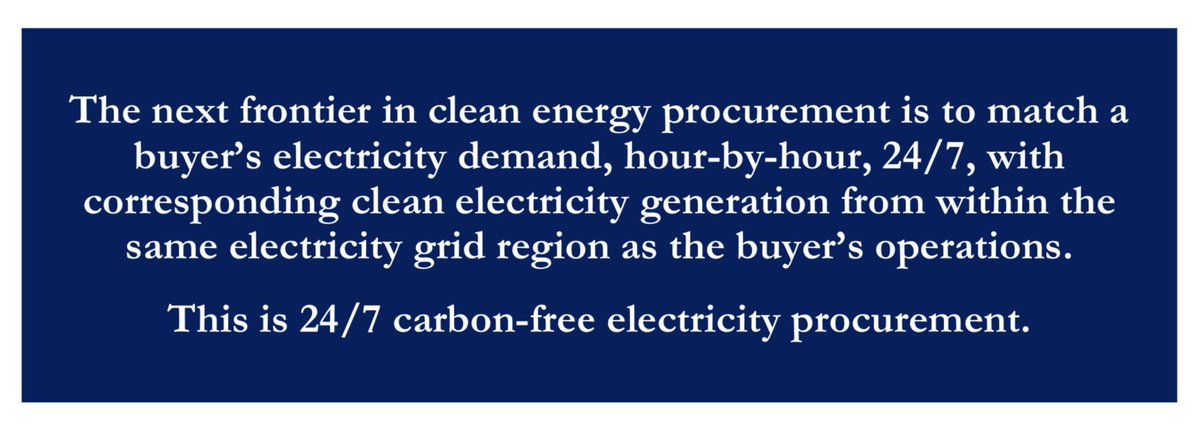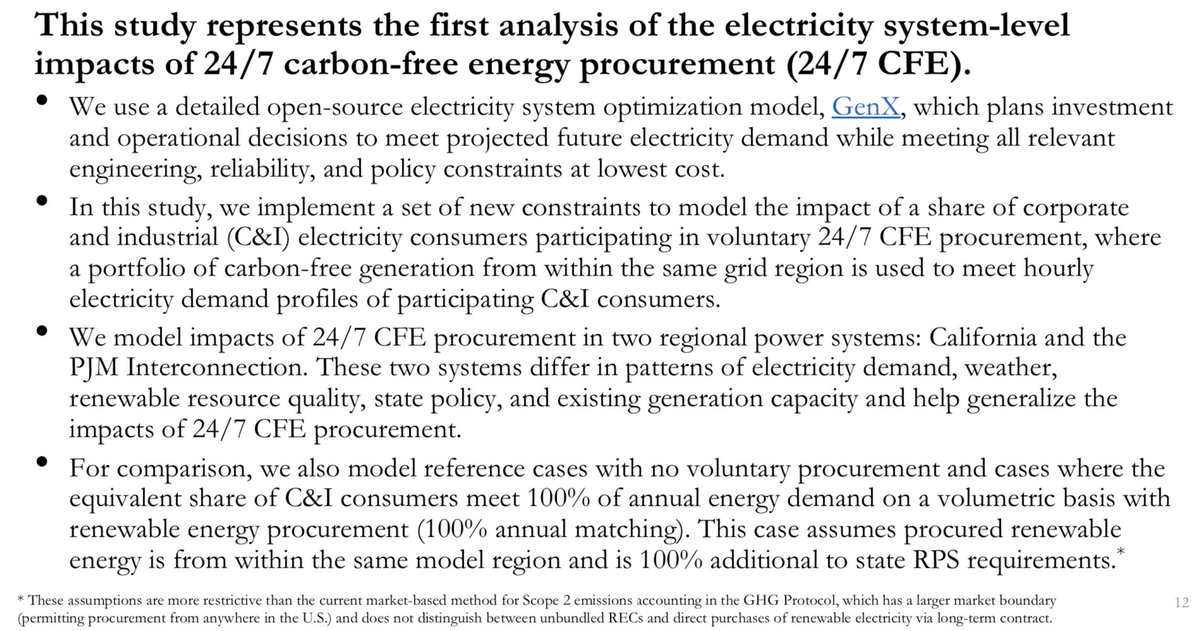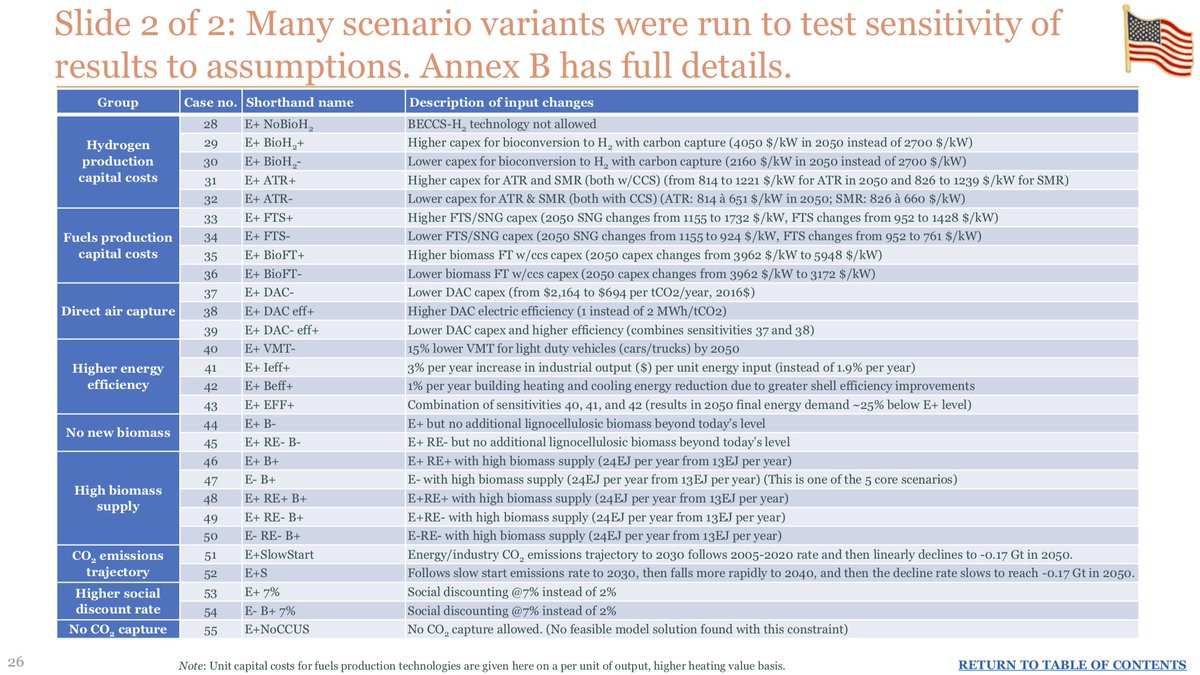
🚨 NEW REPORT 🚨
"System-level of 24/7 Carbon-free Electricity Procurement" is the first study to examine the grid-level impacts of this new strategy in clean energy procurement using a sophisticated electricity system planning model.
Download: acee.princeton.edu/24-7
"System-level of 24/7 Carbon-free Electricity Procurement" is the first study to examine the grid-level impacts of this new strategy in clean energy procurement using a sophisticated electricity system planning model.
Download: acee.princeton.edu/24-7

A growing number of leaders in clean energy procurement, incl. @Google (who financially supported this study), @Microsoft & the Biden Admin, are working to buy clean electricity to match their demand, 24/7, hour-by-hour. See this great @drvolts explainer: volts.wtf/p/an-introduct… 

Voluntary purchases of renewable energy by corporate, institutional & government entities have historically procured a significant share of U.S. wind and solar resources, including 1/3rd of all wind & solar added to US grids in 2020 (see @RenewableBuyers cebuyers.org/deal-tracker/) 

Voluntary procurement of renewable energy has already had a transformative impact on the cost, financeability, and availability of wind and solar power, helping transform these clean energy sources from expensive "alternative energy" to mainstream affordable options for the world 

Procuring enough renewable energy to match 100% of a consumer's annual electricity use remains a powerful step to accelerate clean energy adoption & reduce emissions. Make no mistake: 100% annual matching IS clean energy leadership.
But it does have it's limits...
But it does have it's limits...

Variable generation of wind and solar power purchased by a voluntary buyer is unlikely to align with the timing of the buyer’s electricity consumption. During times the wind isnt strong or the sun doesnt shine, voluntary buyers still have to rely on carbon-emitting power plants. 

The mismatch between variable renewable generation and electricity demand limits the ability to reduce CO2 emissions associated with a buyer's consumption and fails to drive deployment of advanced clean energy technologies needed for society to get to 100% clean electricity goals
Enter 24/7 carbon-free electricity procurement, which aims to go beyond the impacts of 100% renewable energy to drive deeper emissions reductions and replicate the transfromative impact voluntary buyers have had on wind & solar for 'clean firm' generation & long-duration storage. 

Our new study, led by ZERO Lab postdoc @QingyuXu7 w/support from @NehaSPatankar & @aneeshamanocha, represents the first detailed analysis of the electricity system-level impacts of 24/7 carbon-free energy procurement (24/7 CFE). acee.princeton.edu/24-7 

We find that 24/7 carbon-free electricity purchasing enables deeper emissions reductions and deeper transformation of the electricity sector than 100% annual matching with renewables. But it does so at a potentially significant cost premium for early leaders. 

Here's a summary of key findings...
1. 24/7 carbon-free electricity (CFE) procurement can eliminate carbon dioxide emissions associated with a buyer’s electricity consumption, going beyond the impact of procurement of renewable energy to meet 100% of annual volumetric demand.

1. 24/7 carbon-free electricity (CFE) procurement can eliminate carbon dioxide emissions associated with a buyer’s electricity consumption, going beyond the impact of procurement of renewable energy to meet 100% of annual volumetric demand.


2. 24/7 carbon-free electricity (CFE) procurement can drive greater system-level emissions reductions than 100% annual matching IF the CFE target is high enough. (Some interesting observed effects across the two systems we studies -- California & PJM-- unpacked in the study too.) 



3. 24/7 carbon-free electricity procurement drives early deployment of clean firm generation &/or long-duration energy storage, creating initial markets for deployment, innovation & cost-reductions making it easier for societal to follow the path to 100% carbon-free electricity. 



4. 24/7 carbon-free electricity procurement better matches participating demand during periods of limited supply and thus drives significantly more retirement of natural gas generating capacity than 100% annual matching. (This can avoid lock-in of new fossil capacity.) 



5. 24/7 carbon-free electricity procurement comes at a more significant cost premium relative to 100% annual matching; this premium is significantly reduced if a full portfolio of clean firm resources is available and procured and/or CFE targets below 100% are selected. 



There's a lot more interesting analysis in the full report, which you can find at acee.princeton.edu/24-7 Also, sign up there for a free webinar, Friday Nov 19, 11:30am Eastern, hosted by @AndlingerCenter & @Google on the report and the impacts of 24/7 CFE. See ⤵️ for speakers. 

@threadreaderapp unroll please.
• • •
Missing some Tweet in this thread? You can try to
force a refresh













